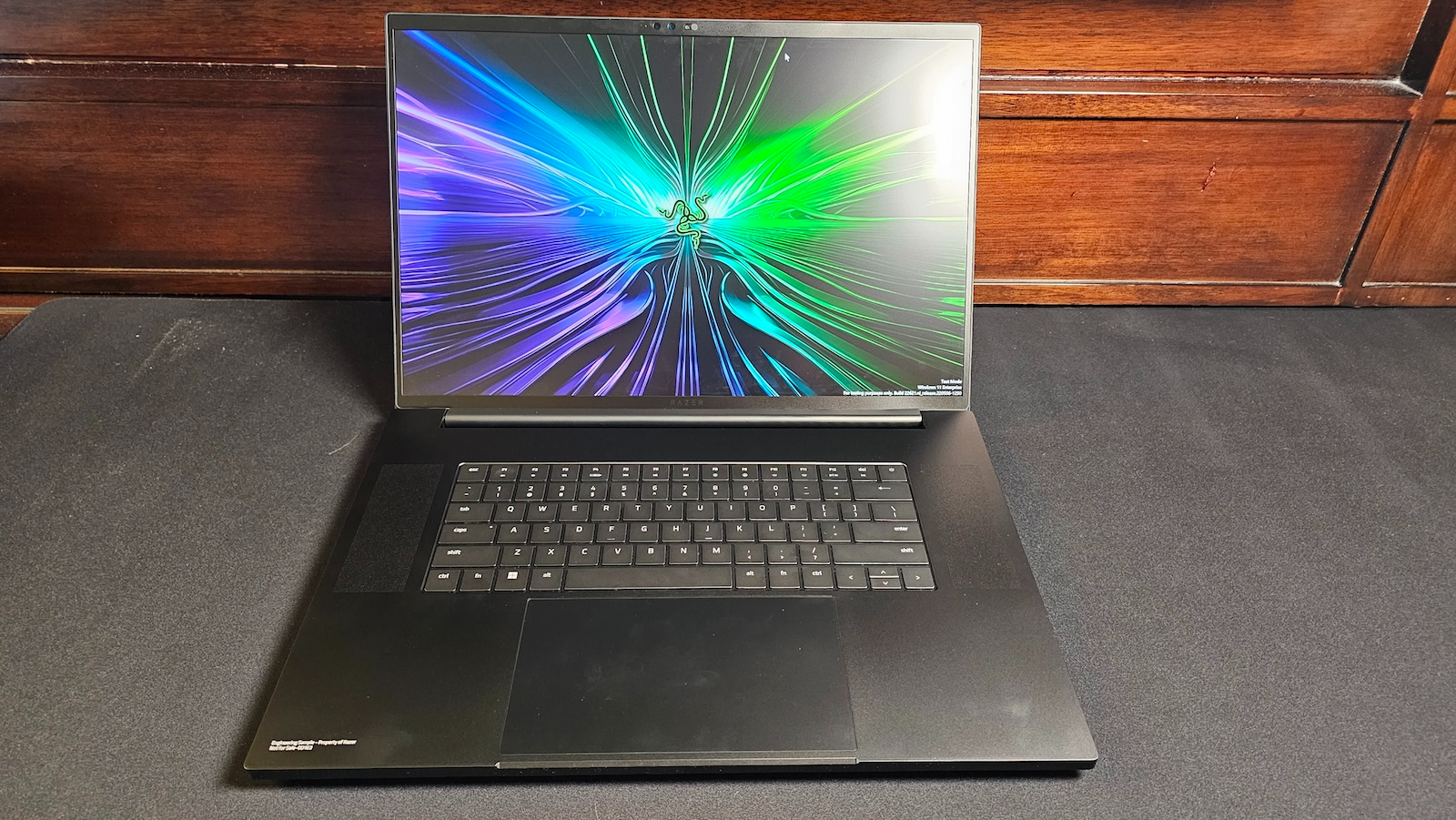Razer Blade 14 and 16 get new AMD and Intel chips, while the Blade 18 is teased with Thunderbolt 5

The Razer Blade line, Razer's stealthy and sleek portfolio of gaming laptops, is getting a series of internal refreshes on the 14 and 16-inch models at CES. The 18-inch Blade is also seeing changes, but Razer is only teasing at updates coming later in the year.
The new Blade 16 is available today, including what Razer says is the first 16-inch, 240 Hz OLED display. That screen is 2560 x 1600 and meets the DisplayHDR TrueBlack 500 certification. And in our brief hands-on time with it here at CES, it definitely gave a good first impression. The Samsung-made display put the screen from last year’s Blade 16 to shame in a side-by-side comparison. But we didn’t have the time to do any gaming on it.


The Blade 16 goes up to a 24-core Intel Core i9-14900HX and Nvidia's GeForce RTX 4090 laptop GPU with a 175W TGP. Surprisingly, materials from Razer state that the system comes with Nvidia's Studio drivers preinstalled rather than Game Ready drivers.
That OLED display won't be the only option. Razer is also bringing back the dual mode mini-LED that we saw on last year's Blade 16 that lets you switch between a 1920 x 1200 resolution at 240 Hz or 3840 x 2400 at 120 Hz.
On the Razer Blade 14, the company is sticking with AMD processors, including the Ryzen 9 8945HS and up to Nvidia GeForce RTX 4070 Laptop graphics. Razer states the RTX 4070 will hit 140W total graphics power (115W base and 25W boost).


Despite the 0.71-inch thick chassis, the Razer Blade 14 will still have upgradeable DDR5 RAM, which is a breath of fresh air considering how many gaming laptops are opting for soldered memory. This is tied to a larger push toward sustainability that a representative told us about, which will eventually include offering more replaceable parts, environmental impact data on packaging, and using recycled materials in the base models of all products.
Razer has highlighted at least one screen option for the Blade 14: a 2560 x 1600, 240 Hz display that is verified by Calman. This machine will also have support for Wi-Fi 7, which should, at the very least, allow for faster game downloads.
The Blade 16 is available today, starting at $2,999.99. The Blade 14 will go on pre-order at Razer.com on January 23, but no pricing has been announced yet. Both sizes will come in black and "mercury" white colors in Razer's unibody chassis, which doesn't appear to have any external changes. But a company representative did tell us that a structural metal plate has been added to the bottom of the chassis to reduce flex.
Razer's biggest laptop, the Blade 18, isn't getting an immediate update. Instead, the company is only teasing some of its features, including support for Thunderbolt 5 and an 18-inch, 4K display at 165 Hz. That’s a big jump in pixel count over last year’s QHD display, but this isn’t an OLED panel, which means its contrast was a major step down after looking at the screen on the Blade 16.


There's no price, release date, or any other details about the Blade 18, and the sample we saw had a thick hinge, as the company is still working on better integrating the screen into the laptop. Razer states that it's for anyone "seeking the most powerful Blade in the lineup." Since the 16-inch laptop has a top-end Intel CPU and an RTX 4090, this makes me wonder if we should expect new mobile parts coming later this year.
Razer is also announcing an updated USB Type-C dock, which is available now starting at $119.99. It features 11 ports, including two USB Type-C ports, four USB Type-A ports, Ethernet, HDMI, UHS-1 SD card and microSD card slots, and a 3.5 mm audio jack. It's made of an aluminum alloy that Razer confirms is good for thermal management, and supports 85W charging for laptops (though you'll need to bring your own charging cable and power adapter).
Get Tom's Hardware's best news and in-depth reviews, straight to your inbox.

Andrew E. Freedman is a senior editor at Tom's Hardware focusing on laptops, desktops and gaming. He also keeps up with the latest news. A lover of all things gaming and tech, his previous work has shown up in Tom's Guide, Laptop Mag, Kotaku, PCMag and Complex, among others. Follow him on Threads @FreedmanAE and BlueSky @andrewfreedman.net. You can send him tips on Signal: andrewfreedman.01